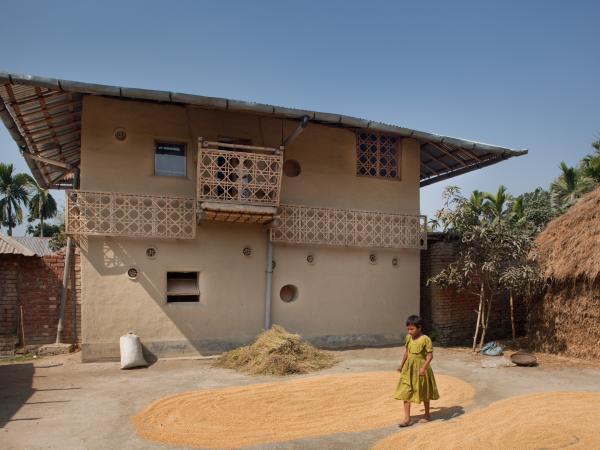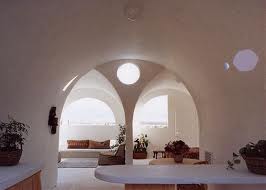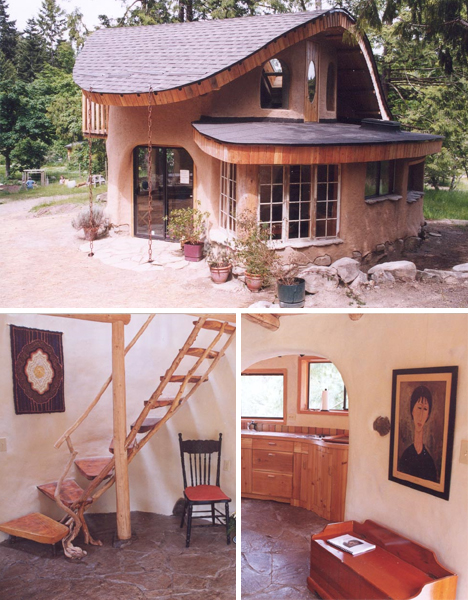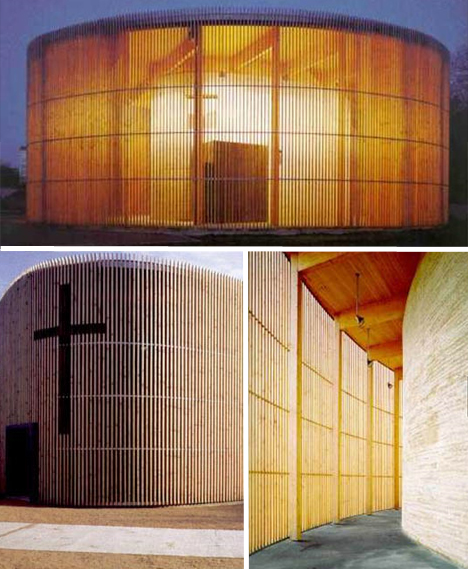The excessive use of CFC or chlorofluorocarbons and the indiscriminate use of fossil fuels have resulted in rising the earth’s temperature since the late 19th century. The 20th century has witnessed the rise in global temperature by approximately 1ºC. The Kyoto summit and other global initiatives have now led to a greater awareness of global warming and the urgent need to reverse this trend. The design of future homes should take into account this factor and modify construction accordingly.
1. Straw-bale construction

It is a method of construction using bales of straw extracted from rice, rye or oats. These buildings are commonly referred to as natural buildings. This method uses bales of straw stacked one on top of another reinforced using scaffolds. The bales of straw are placed on a raised foundation, a capillary barrier break between the bales and the foundation is also provided. The bale walls are tied up sing bamboo or rebar. The wall is then plastered with lime-based, clay-based or cement-based mixes. The advantages of this method are low cost of construction and high insulation which is essential in an environment where weather is fickle. The straw-bale construction was fairly common in the early part of the 19th century and was first initiated in Nebraska USA. The Pilgrim Holiness Church in the city of Arthur, Nebraska, USA a good example of this construction.
2. Spar and membrane structure (SMS)
This system of construction was invented by Prof. Gary Black of University of California, Berkeley. This methodology borrows heavily from the straw-bale method but steel scaffolds are used between which rice straw and other vegetable wastes are used to fill the wall. These houses have been shown to be fire-resistant and are resistant to earthquakes. These houses are build by “Integrate Structures” The houses typically cost around $200 per square feet of construction but the superior energy efficiency of the building in the long-term offsets this cost and even makes you a profit on your investment.
3. Mud houses

Mud mixed with organic materials are one of the most ancient forms of constructing a house. This method of building a house is termed as the wattle and daub technique. Wooden structures as props are used and between these wooden scaffolds, vegetable matter mixed with straw and clay are packaged, this is done to prevent shrinkage during drying. Wattle and daub construction is not one of the main techniques to build in mud. An 80-square meters home with two-bedrooms a small kitchen, bathroom and sitting room will only cost $2500 to construct. The house will remain cool in the summer and warm in the winter and it is the perfect solution to a globally warm world.
4. Geltefan method or ceramic houses

Nader Khalili’s in the 1970 invented this method of construction. The soil used for this construction is high on clay and low on impurities. The soil containing clay and water is mixed until it resembles bread-dough. The clay and soil mixture is the made into blocks (brick like), and the blocks allowed to dry for two to three weeks. A mortar is made with a glass, soda, or colmanite to help fuse it. The entire house is assembled, no mortar is used in assembly of the house and then it is fired and the temperatures of about 2900ºC is maintained and once the steam escapes from the ceiling the house is cooled for 48 hours. These houses are extremely water-resistant and can maintain an ideal temperature indoors.
5. Cob method of construction

This is one of the oldest methods of construction known to man and many of the structures in Afghanistan are made of this material. In this type of construction, clay and earth are mixed with straw and they are mixed by trampling. In ancient times, oxes were used, now we could just use an earth-mover to trample the mixture. This is then sculpted into the wall of the house, no scaffolds are required for the house. The house is literally sculpted using this mixture. This is one of the cheapest form of constructions and one of the main advantages of this method is that the houses are always maintain a constant temperature and are warm in winters and cool in summers.
6. Rammed earth construction

In this method of construction, the walls of the building are made of earth, chalk and lime mixed together and it is one of the oldest techniques of building a house. If you are seeking a sustainable natural building, this is one of the best methods and the buildings are thermally resistant and are durable. The construction of these buildings is also fairly simple. These buildings are passively solar heated, that is they take12 hours for warmth to go through the 35 cm wall which means that the house will remain warm in winters and cool in summers.



